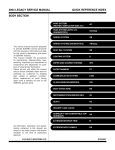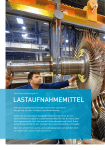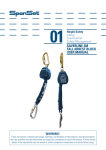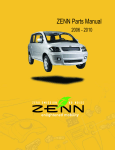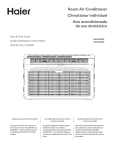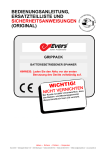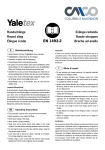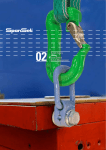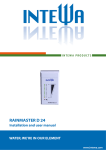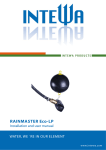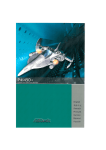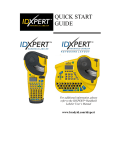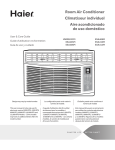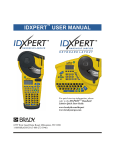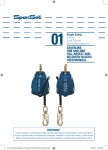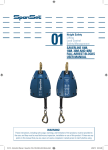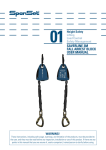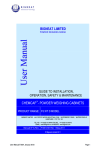Download EN EN Operation Manual DIN EN 1492-2 Round
Transcript
25 A [kg] B 500 RS 500 C l1 min. [m] D E F l1 max. [m] SupraPlus 500 EK 500 0,375 30 1:7 PES 1000 RS 1000 SupraPlus 1000 Twintex 1000 EK 1000 0,375 30 1:7 PES 2000 RS 2000 SupraPlus 2000 Twintex 2000 EK 2000 0,375 30 1:7 PES 3000 RS 3000 SupraPlus 3000 Twintex 3000 EK 3000 0,375 30 1:7 PES 4000 RS 4000 SupraPlus 4000 Twintex 4000 EK 4000 0,5 30 1:7 PES 5000 RS 5000 SupraPlus 5000 Twintex 5000 EK 5000 0,5 30 1:7 PES 6000 RS 6000 SupraPlus 6000 Twintex 6000 EK 6000 1 30 1:7 PES 8000 RS 8000 SupraPlus 8000 Twintex 8000 EK 8000 1 30 1:7 PES 10.000 RS 10.000 MagnumPlus 10.000 EK 10.000 1 60 1:7 PES 15.000 RS 15.000 MagnumPlus 15.000 EK 15.000 1 60 1:7 PES 20.000 RS 20.000 MagnumPlus 20.000 EK 20.000 1 60 1:7 PES 25.000 RS 25.000 MagnumPlus 25.000 EK 25.000 1 60 1:7 PES 30.000 RS 30.000 MagnumPlus 30.000 EK 30.000 1 60 1:7 PES 40.000 RS 40.000 MagnumPlus 40.000 EK 40.000 3 60 1:7 PES 50.000 RS 50.000 MagnumPlus 50.000 EK 50.000 3 60 1:7 PES 60.000 RS 60.000 MagnumPlus 60.000 EK 60.000 3 30 1:7 PES 80.000 RS 80.000 MagnumPlus 80.000 EK 80.000 3 30 1:7 PES 100.000 RS 100.000 MagnumPlus 100.000 EK 100.000 3 30 1:7 PES 120.000 MagnumPlus 120.000 EK 120.000 3,5 30 1:7 PES 150.000 MagnumPlus 150.000 EK 150.000 3,5 30 1:7 PES 200.000 MagnumPlus 200.000 EK 200.000 3,5 30 1:5 PES EN EN Operation Manual DIN EN 1492-2 Round sling Page 12 - 21 Heben • Sichern • Fördern • Verpacken Heben • Sichern • Fördern • Verpacken Evers GmbH • Graf-Zeppelin-Straße 10-12 • 46149 Oberhausen • Telefon (02 08) 99 475-0 • Telefax (02 08) 99 475-31 • E-Mail [email protected] • www.eversgmbh.de Evers GmbH • Graf-Zeppelin-Straße 10-12 • 46149 Oberhausen • Telefon (02 08) 99 475-0 • Telefax (02 08) 99 475-31 • E-Mail [email protected] • www.eversgmbh.de 1 0°-45° M 1,0 * 2 11 M 0,8 a 22 12 4 0°-45° M 1,4 M 1,12 1 45°-60° M 1,0 M 0,8 * 2 * 3 4 13 0°-45° 45°-60° 0°-45° 45°-60° 0°-45° 45°-60° M1 M 1,4 * 6 45°-60° * - 5 * b * 18 M 1,0 * * 0°-45° 3 M 1,4 M 2,0 * 45°-60° 13 0°-45° M 1,4 * M1 * M 2,1 * M 1,5 * M 2,1 * 23 4 18 14 * 45°-60° M 1,0 * 19 7 8 9 15 17 16 26 M 1,5 * 1000 1400 2100 2000 2800 4200 3000 4200 6300 4000 5600 8400 5000 7000 10.500 6000 8400 12.600 8000 11.200 16.800 10.000 14.000 21.000 15.000 21.000 31.500 20.000 28.000 42.000 25.000 35.000 52.500 30.000 42.000 63.000 1400 2100 B LS GSH RSG-1-1000 LS RSG-1-1000 GSH 1000 1500 RSG-2-2800 GSH RSG-4-4200 LS RSG-1-3000 GSH 3000 4500 RSG-2-4200 LS RSG-2-4200 GSH RSG-4-6300 LS RSG-1-4000 GSH 4000 6000 RSG-2-5600 LS RSG-2-5600 GSH RSG-4-8400 LS RSG-1-5000 LS 7000 10.500 RSG-2-1400 GSH RSG-2-2800 LS RSG-1-4000 LS 5600 8400 RSG-2-1400 LS LS RSG-1-2000 GSH 2000 3000 RSG-1-3000 LS 4200 6300 GSH RSG-4-2100 LS RSG-1-2000 LS 2800 4200 LS 5000 7500 RSG-1-5000 GSH RSG-2-7000 LS RSG-2-7000 GSH RSG-4-10500 LS RSG-1-6000 LS 8400 12.600 6000 9000 RSG-2-8400 LS RSG-4-12600 LS RSG-1-8000 LS 11.200 8000 16.800 12.000 RSG-2-11200 LS RSG-4-16800 LS RSG-1-10000 LS 14.000 10.000 21.000 15.000 RSG-2-14000 LS RSG-4-21000 LS RSG-1-15000 LS 21.000 15.000 31.500 22.500 RSG-2-21000 LS RSG-4-31500 LS RSG-1-20000 LS 28.000 20.000 42.000 30.000 RSG-2-28000 LS RSG-4-42000 LS RSG-1-25000 LS 35.000 25.000 52.500 37.500 RSG-2-35000 LS RSG-4-52500 LS RSG-1-30000 LS 42.000 30.000 63.000 45.000 RSG-2-42000 LS RSG-4-63000 LS C l1 min. [m] 0,375 0,375 RSG-4-2100 GSH 0,375 0,375 0,375 RSG-4-4200 GSH 0,375 0,375 0,375 RSG-4-6300 GSH 0,375 0,375 0,375 RSG-4-8400 GSH 0,375 0,375 0,375 RSG-4-10500 GSH 0,375 1 1 1 1 1 1 2,5 2,5 2,5 2,5 2,5 2,5 2,5 2,5 2,5 2,5 2,5 2,5 2,5 2,5 2,5 GSH D E l1 max. [m] 10 10 10 10 10 10 20 20 20 20 20 20 20 20 20 20 20 20 20 20 20 50 50 50 50 50 50 50 50 50 50 50 50 50 50 50 1:4 1:4 1:4 1:4 1:4 1:4 1:4 1:4 1:4 1:4 1:4 1:4 1:4 1:4 1:4 1:4 1:4 1:4 1:4 1:4 1:4 1:4 1:4 1:4 1:4 1:4 1:4 1:4 1:4 1:4 1:4 1:4 1:4 1:4 1:4 1:4 F PES/Metall PES/Metall PES/Metall PES/Metall PES/Metall PES/Metall PES/Metall PES/Metall PES/Metall PES/Metall PES/Metall PES/Metall PES/Metall PES/Metall PES/Metall PES/Metall PES/Metall PES/Metall PES/Metall PES/Metall PES/Metall PES/Metall PES/Metall PES/Metall PES/Metall PES/Metall PES/Metall PES/Metall PES/Metall PES/Metall PES/Metall PES/Metall PES/Metall PES/Metall PES/Metall PES/Metall IT RFuni ad anello con portata oltre 40t WLL in conformità con la norma DIN EN 1492-2 d 10 A3 FR Rundschlingen über 40t WLL in Anlehnung an DIN EN 1492-2 A1 24 A2 [kg] d 21 EN round slings with a WLL over 40t comply with DIN EN 1492-2. c NL Rondstroppen hoger dan 40t WLL volgens de bepalingen van DIN N 1492-2 b ES Correas portadoras redondas para más de 40t WLL en cumplimiento con la norma DIN EN 1492-2 20 a DE Rundschlingen über 40t WLL in Anlehnung an DIN EN 1492-2 r Dear SpanSet customer, Thank you for purchasing SpanSet round slings. You have chosen a quality product that will last a long time when used as intended. This operating manual explains how to use them correctly and safely. Ask your SpanSet dealer or SpanSet application technician if you need further instructions. You can find more information on our lifting, fall protection and load protection technology and our services at www.spanset.de. The SpanSet group of companies SpanSet round slings and round sling hangers are designed for commercial use. Do not use the round slings until you have completely read and understand the operating manual! Also, follow the general rules1 for lifting loads. The operating manual must be kept for the entire period of use and passed along with the product. Non-compliance may cause accidents, injury or even death! Danger! Failure to comply with this important instruction may lead to improper handling! This may cause accidents, injury or even death. Please observe the symbols on the foldout pages, which are explained under the numbers below: •1 round slings/round sling hangers must not be used when transporting people and/or animals, because they are not designed for this application! •2 Do not overload round slings/round sling hangers, because they may become damaged or break! •3 Do not tie knots in round slings/round sling hangers. This will considerably reduce strength. •4 Do not fasten round slings/round sling hangers to a load if they are twisted. This will considerably reduce strength. •5 Damaged, overloaded or worn round slings/round sling hangers must immediately be removed from use. Load-bearing capacity is no longer guaranteed. •6 Do not use round slings/round sling hangers with a tilt angle of more than 60°. This will overload the round slings/round sling EN Page 12 1 Also see “Training and important things to know” •7 •8 •9 •10 •11 •12 •13 •14 •15 •16 •17 hangers and break them. Do not use the round slings in a chain sling. The round slings may slide together and the load may fall. Never simply lay round slings/round sling hangers over the crane hook. The round slings/round sling hangers may slide and the load may fall. round slings/round sling hangers must not be pinched or lie one above another. This will considerably reduce strength. round slings/round sling hangers must not be placed against sharp edges, slide over them and/or be pulled across them. The lifting strap may be severed and the load may fall down (see the definition of sharp edge1). Load hooks must not be loaded on the hook tip. The false load considerably reduces load capacity. Do not put a load down on round slings/round sling hangers. round slings/round sling hangers may become damaged. Load hooks must be used only in such a way as to prevent unintentional unhooking. The load may fall. Metal fittings (such as load hooks) must never be used in acids. This will considerably reduce strength. During lifting, the load should never get out of control. Swinging or rotating loads may hurt buildings, machines or people, and components may fall. Observe local occupational safety regulations and manufacturers’ instructions! Following these instructions helps prevent accidents. round slings may take on an electrostatic charge, so their use is forbidden underground and in explosive zones. Table of Contents 1 Functional description and application 2 Safety instructions and handling 3 Operating round slings/round sling hangers 4 Inspection, maintenance, repair and end of use 5 Storage and cleaning 6 Training and important things to know 1 A “sharp edge” means when the radius “r” of the transported goods’ edge is smaller than or equal to the thickness “d” of the lifting strap or round sling. Page 13 EN 1 Functional description and application Round slings/round sling hangers are intended for slingers (authorized persons) to use for lifting loads. Round slings/round sling hangers must be used as intended. The various SpanSet round slings/round sling hangers can be clearly identified by their sewn label 26 1 and accompanying documents. All modifications to round slings are forbidden. SpanSet Round slings/round sling hangers are made of reinforced synthetic fibres (e.g. polyester ,polyamide or polypropylene). Their production is DIN EN ISO 9001 certified. 2 Safety instructions and handling Only trained (authorized) persons may fasten loads. When choosing and using slings, the weight and fastening method must be considered 18 20 21 22 23 . The weight, geometry, surface condition and design features of the load are crucial criteria for choosing the sling. A sling’s nominal load capacity can change depending on the fastening method. The change in load capacity is shown by the load fastening factor (M). A sling’s nominal load capacity is indicated in the “simple direct” fastening method. The load fastening factor (M) for the rest of the fastening methods 18 20 21 22 23 can be found in this operating manual. Using round slings/round sling hangers with chemicals is permitted only with manufacturer approval. The necessary data include: chemical, concentration, temperature and retention time. Before storage and reuse, the user must clean round slings/ round sling hangers that have come into contact with acids, lye or other aggressive substances. Ask your SpanSet dealer or SpanSet itself about cleaning processes. EN Page 14 1 Exemplary label When the temperature falls below freezing, ice crystals form in damp round slings/round sling hangers and damage the fabric. This can cause loss of strength, so damp round slings must be dried in ventilated areas before reuse. round slings made of polyester (PES) have a blue label, and round slings of polyamide (PA) have a green label. It is safe to use polyester and polyamide round slings within a temperature range of 40°C to +100°C. Round slings made of polypropylene (PP) have a brown label and can be safely used within a range from -40°C to +80°C. Never use round slings/round sling hangers with illegible or missing labels, because missing safety instructions can lead to improper use. To prevent the product label from being damaged or torn out (e.g. label and transponder), the chock hitch must not be placed in the label area, and the label must not lie on the load or in the crane hook. Never lift or lower the load in a jerky manner. This creates forces that can’t be controlled. The round slings/round sling hangers may tear or become damaged. If there are people in the danger zone, they must be warned that a lifting process is being performed and, if necessary, they must be removed from the area of immediate danger. It is prohibited for anyone to be under a suspended load! Hands and body parts must be kept away from the slings in order to prevent injury if the slings tighten. Plan the load’s fastening, lifting and lowering process with the greatest of care before the actual lifting process. Reckless fastening can damage the load the round sling or endanger employees’ life and health! Page 15 EN For shortening, the round slings can be laid around a crane hook 19 . When lifting sharp-edged loads, protect round slings/round sling hangers with safety tubes (e.g. secutex safety tubes or NoCut®). For net weight of 25 kg and above, ergonomic handling of round slings/round sling hangers requires technical equipment, such as pulleys. Note that UV radiation (sunlight) may impair the properties of the sling. Use round slings so that the latter may be removed without damage after the lifting process. 3 Operating round slings/round sling hangers 3.1 First use Before first use, the user must inspect the round slings/round sling hangers for compliance with the order, completeness of accompanying documents (e.g. declaration of conformity and manufacturer certificate) and conformance of the data in the accompanying documents with the product labels. Upon first use, an authorized person must make a visual check and document it according to BGR 500. For this, a chart can be created or an inspection card filled out and saved. Equipping products with RFID tags and electronic documentation of commissioning, such as with IDXpert® (database), speeds up and simplifies the routine described. 3.2 Choosing the right round slings/round sling hangers Determine the load’s weight by weighing or calculation! Find out the position of the load’s centre of gravity from design documents or calculate it! The crane hook must be positioned perpendicularly to the load’s centre of gravity, and the length and angle of the round slings must be determined. EN Page 16 20 21 Common fastening methods for round slings: a) direct b) simple threading c) simple hooked on without an inclination angle d) simply hooked on with an inclination angle 22 Common fastening methods for using round slings in pairs a) direct 23 b) threaded If more than one lifting strap is used for the lifting process, they must all be identical. Uneven stretching of the round slings poses a danger of tilting the load. With symmetrical load distribution, equal strap lengths and equal angles according to BGR 500 for a 4-strap hanger, only three straps are considered to bear load. With asymmetrical load distribution and/or unequal angles, with 2-strap hangers, only one strap can be considered load-bearing, and with 3-strap or 4-strap hangers, only two straps can be considered load-bearing. If round slings are used in pairs, use of a cross member is recommended, so that the load is distributed evenly 23 . 3.3 Choosing the nominal load capacity The round slings’ nominal load capacity must be greater than or equal to the load’s mass. When choosing the round slings, pay attention to which fastening method and with what tilt angle the lifting process is to take place, because this affects the useful load capacity of the lifting strap. The lifting strap must lie completely on the load suspension device (e.g. crane hook) and on the load. Page 17 EN Attention: Too strong a lateral enclosure (pinching) decreases round slings’ load capacity. 3.4 Arranging the load Place the lifting strap on the load in such a way that it cannot slide on the load or even off the load during the lifting process. Make sure the lifting strap does not twist or intersect with the load. Use adequate edge protection1 for coarse and/or sharp-edged loads. Make sure that the part of the load to be fastened to the lifting strap can take the force introduced during lifting. 4 Inspection, maintenance, repair and end of use round slings/round sling hangers must be checked for defects before each use. If you detect defects, the round slings/round sling hangers must be set aside. An authorized person must perform the check according to the employer’s specified inspection interval, but at least once per year. Depending on the usage and operational conditions, interim inspections may also be necessary. The inspections must be documented according to BGR 500. Additionally, all metallic fittings must undergo crack inspection at least once every three years. The inspection must be done according to EN 10228 Part 1 (Magnetic powder testing - “fluxes”) or Part 2 (Penetration Test). Speed up and simplify documentation of sling inspections. With IDXpert®, SpanSet offers the right software and hardware. You can find more information at our homepage: www.spanset.de. Round slings/hangers can be repaired, for example, if: -- the label is missing and the manufacturer is known, -- a replaceable fitting is damaged, -- or only the tube sleeve is damaged. Repairs can be made only by the manufacturer or a manufacturerauthorized person. Round slings/hangers should no longer be used if, for example: -- the label is missing and the manufacturer is unknown, EN Page 18 1 secutex, NoCut® -- the round sling’s load-bearing core encased by the tube sleeve is damaged, -- the fabric has been damaged by acid or lye. -- the tube sleeve has been damaged by the effects of heat (such as welding beads), -- non-replaceable fittings have been distorted by overload or wear (bending, cutting, ground areas on the support points, etc.). Especially if fittings show incipient cracks, lateral cracks, notches, breakage or corrosion, the affected slings must be removed from use. Never take a risk! round slings/round sling hangers can be disposed of with household waste as long as the fabric has not been contaminated with oils, raw materials, etc. If the fabric has been contaminated by chemicals, the round slings/round sling hangers must be disposed of as special waste. The metal fittings must be sent for recycling. 5 Storage and cleaning Maintenance and proper storage prolong the quality and functionality of SpanSet round slings/round sling hangers. Therefore, inspect the round slings/round sling hangers after each use! Damaged round slings/round sling hangers must be removed from use or repaired, and soiled round slings/round sling hangers must be cleaned before they are put into storage (see 2 Safety instructions and handling). Keep the round slings/round sling hangers clean, dry and well ventilated, and protect them from direct sunlight and the effects of chemicals. 6 Training and important things to know SpanSet round slings/round sling hangers fully meet the requirements of BGR 500, 1492-2, EC machine guideline 2006/42/EC, as well as ZH 1/324 and BGI 556. Please note that the standards and guidelines listed are only examples. Please be aware that specific industries and applications may have special safety requirements that must be complied with. When using textile slings, observe regional occupational safety regulations, such as the rules of the professional associations in Germany. You can get more information and access sources for the Page 19 EN regulations from your SpanSet dealer or directly from SpanSet. Glossary: Language: English EN Please read the operating manual and follow the warnings and safety instructions. Attention: Special caution and attention! Forbidden! Information: Handling instructions. Get the benefits of SpanSet training for your employees. Our safety training centre regularly offers seminars in fastening, load safety and fall protection technology. Naturally, we also train on site. Ask us, or visit the seminar website: www.spanset-seminare.de. Benefit from the expertise of SpanSet specialists in preparing, configuring, certification, risk assessment, hazard analysis and operating manuals. You can find more information on our services at our homepage. Technical data, round slings, hanger types Technical data, round sling types A- 1Permissible WLL C - Useful length A2- 1Permissible WLL (kg) to 45° D - Colour A3- 1Permissible WLL (kg) to 60° E- 3Safety factor (SF) B- 2Item description/type F - Material 24 25 Please note: The max. l1 of EK slings is 60 m. EN Page 20 1 WLL = working load limit = max. permissible load capacity. 2 RSG = round sling hanger with 1, 2 and 4 load-bearing cords. 3 SF = relationship between permissible load capacity and minimum breaking strength. 4 LS or GSH = alternative fittings (product types). The manufacturer certificate per DIN EN 1492-1 and DIN EN 1492-2 is a part of this user manual. The relevant text passages are on a grey field. EC Declaration of Conformity pursuant to Appendix II Part A of EC Machine Directive 2006/42/EC SpanSet GmbH & Co. KG • Jülicher Straße 49-51 • D - 52531 Übach-Palenberg We hereby declare that the round sling described below, in the version we have marketed, conforms in its design and construction to the fundamental safety and health requirements of the EC Machine Directive. Any unapproved modification of the round sling voids this declaration. The round sling must be used only for the purposes described in the operating manual. Description of round sling machine: Type: See round sling statement below 24 25 Function: Load suspension device Serial No: All serial numbers under the type description Production year : Starting in 2013 Applicable EC Machine Directive 2006/42/EC, directives: Electromagnetic compatibility RL 2004/108/EC Harmonized European standards applied DIN EN ISO 12100, DIN EN ISO 13857 National standards and technical specifications applied DIN EN 1492-2, DIN EN 1677-1, DIN EN 1677-2, DIN EN 1677-3, DIN EN 1677-4 Person(s) responsible for compiling the technical documentation: SpanSet GmbH & Co KG (CE Representative) Übach-Palenberg 15.07.2013 (Location, Date) Hans-Josef Neunfinger CEO Patrik Schulte CEO Page 21 EN













